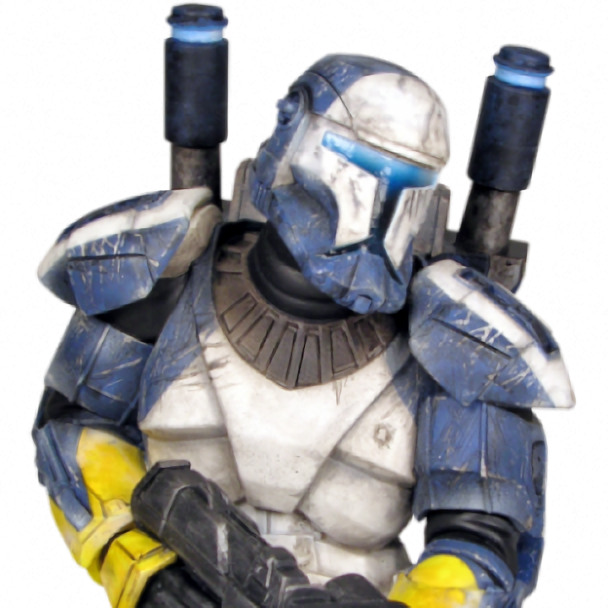wanting to hop into the world of linux on a dual boot method (one of my favorite games unfortunately cannot be run on linux at all, and it’s a gacha. I don’t want to gamble with my account being banned, so I’m keeping windows for it specifically.) this’ll be my second go at it, I used Pop!_OS briefly but had some issues with wifi and didn’t love the GNOME layout. I have a new distro picked out, but I just was curious what other people are using in this community. was also wondering what made you fall on your current one.
and maybe as some bonus questions, what are some distros you’ve tried but didn’t like? what about a distro you want to try eventually? I’ve seen distrohopping is a thing, hahaha.
Qubes
I have a few machines, which run:
- Raspbian Bookworm (arm64) with IceWM - Raspbian is the only desktop RPi distro that works out-of-the-box. I chose IceWM because it’s fast, light, customisable, and I can make it look like it’s 2004.
- openSUSE Tumbleweed with Xfce+Bspwm - I keep going back to openSUSE. It just works. As for the desktop, I wanted Xfce but with tiling.
- Mageia 9 with LXQt - I just needed something lighter than Fedora Xfce, as this machine only has 4GB of RAM.
- FreeBSD with i3 - Thought I’d give BSD a try. I was pleasantly surprised.
- Gentoo (WIP) - I’m just throwing random distros at my MacBook until something sticks. Gentoo is fast and can control the fan without me having to git clone and compile the drivers (ironically).
- crunchbang++ (i386) with Openbox - This is a mid-2000s MacBook, running one of the few Linux distros that actually boots on it.
Some distros I tried but did not like were Pop!_OS, Slackware, Zenwalk, Freespire, Redcore, Fedora Atomic, ArchBang, and antiX.
Sone distros I’d like to try are Qubes OS, Clear Linux, CRUX, Kwort, Paldo, Exherbo, NuTyX, T2, Chimera, Adélie, Frugalware (no new ISOs since 2016, but the packages are still updated), Dragora, Parabola, Hyperbola, PLD, KANOTIX, Calculate, ALT, ROSA, and AUSTRUMI.
The reasons I have not yet tried these are mostly down to my limited hardware and the complexity of some of the distros. With others, it’s often down to WiFi drivers not existing for my proprietary cards. And then there are also a couple of distros from Russia, which I feel I can’t trust at the moment.
Finally, my chance to say…
I use Arch, by the way :D
…Also, I tried Ubuntu and Mint and Fedora and some others (ages ago). Didn’t like feeling like everything I wanted to do was stepping on the toes of some software that was trying to manage it for me, but not how I wanted or I just didn’t want it managed for me.
I tend to alternate between Arch and Gentoo every few years. Sometimes Arch feels like it’s making assumptions and doing things its way more than I want, but then Gentoo takes ages to install or update anything, is a bit more fiddly. I’ll probably go back or maybe try out Funtoo again but for now I don’t have a CPU that won’t melt if I try to compile things (laptop-only booooo v.v!!) sooo Arch for now. :3 🤷
I’m currently on Arch, but my first distro was Linux Mint. Linux Mint eased my transition into the Linux world, as it looked and behaved almost the same as Windows. You can avoid terminal commands completely thanks to the GUI apps that the Mint team includes for updating, installing, and removing packages.
I switched to Arch because one of the benefits of Arch is that it forces you to become familiar with the various different components that make up a Linux distro. When you install Mint, pretty much everything is included out of the box. You may have to install a few proprietary drivers here and there, depending on your HW config, but overall, you get everything you need to start using your computer. You don’t have to concern yourself with a lot of things. Arch is different. Even with the
archinstallcommand that you can use to simplify the installation process, you still have much to do post-install. Audio drivers, package manager, Bluetooth, productivity apps, customization options, WiFi drivers, to name a few. And even after that, when you start daily driving Arch, you still may encounter issues that would require you to do some troubleshooting via reading the Arch Wiki or looking for similar problems on Arch forums. It can be a headache at times, but I personally feel it’s worth it.Hannah Montana Linux
Opensuse because I like green.
I’m on Debian Stable (with a few backported packages) for both work and gaming. It’s not the most beginner-friendly distro, but I’m no beginner, and I love how low-maintenance it is. It just keeps on working.
I would like to try Qubes OS eventually. I don’t think it will be ready for gaming any time soon, but for privacy and security-minded isolation of components, I expect it’s tough to beat.
Mint 21.3 as my main Desktop OS - almost zero complaints after over a year. Everything just works.
Ubuntu using Linux-Surface on my old Surface Pro. Breathed new life into a device I had abandoned (after all 8gb of ram isn’t enough for Windows malware these days). Gnome works really nice on a touchscreen two-in-one. Kudos to the Linux-Surface folks. They took one of the few positive developments from Microsoft (Surface hardware) and made it possible to remove the worst part (windows). Not that I’ll ever buy a Surface again. It also allowed me to retire my iPad.
Fedora Linux on a cheap Dell laptop as my media client. Fedora is nice and runs well, haven’t done too much with it other than Firefox and Calibre. Nice to see a different ‘branch’ in action.
I’m pretty basic and generally lazy so I don’t delve into some of the smaller distros or distro hop. Maybe later I’ll do it with VMs, but eh not sure it’s my kind of hobby. Too many other things to do.
Best of luck and let us know how it goes.
Bazzite, from Universal Blue, based on Fedora Atomic Desktops. Immutable-style distro which means critical OS files and folders are read-only and all system apps (the ones preinstalled) are updated together as a full image rather than piecemeal. Anything not preinstalled can be installed in a distrobox or as a flatpak/appimage/aur, or as a last resort, layered with rpm-ostree. Extremely user-friendly, everything a gamer needs is either installed and preconfigured out of the box or available as a flatpak. Bazzite’s the first time I had a good enough experience on Linux that I made it my daily driver; now Windows is the secondary OS I only go to when I really need that one thing that only works there.
this is actually what I’m going to be giving a go! I have very little experience (I have servers that run Debian and DietPi, but I get help with those) with linux but I’m really excited to give the KDE version a try. and I’ve been trying to learn, too, because also my partner is going to be moving to a dual boot setup as well. been watching a lot of videos and reading a lot too, especially while my desktop is out of commission.
do you find that anything is missing in Bazzite for you?
The biggest thing missing for me is good VR support at the OS level. Even with all the optimizations in Bazzite making regular games perform about equivalent to Windows, latency in VR is awful, and motion smoothing just plain isn’t supported in Linux yet, on any hardware. Those two pain points make the experience much worse than on Windows, I’d be motion sick in minutes if I tried to actually play something. Thankfully, normal gaming works just fine, and I don’t play VR as often as flat games, so I can just boot into Windows when I want to do that.
The second thing is the poor state of music players. I’m used to the very extensive feature set in MusicBee, and not a single native player hits all the boxes that MusicBee does. It can be run in Bottles, but not very well, and as a newbie, it took me a lot of extra tinkering to get things working even sort of right - file permissions, dotnet stuff, font libraries, etc. I still haven’t quite gotten file permissions working right, and font rendering is pretty bad (and custom font selection is broken entirely), but maybe I’ll figure some of that out eventually so I can stop booting into Windows whenever I want to make changes to my library.
I just installed Bazzite over the weekend on my main computer. It’s definitely not the smooth experience that Windows is, but I’m hoping I can get used to it and keep using it.
It’s a little more tinkering than Windows, but definitely less than it’s ever been, and getting better all the time. I’ve found it to be basically exchanging one set of weird OS quirks for another. And hey, if you have any issues, the folks in the Universal Blue Discord are super friendly and helpful!
Debian stable on Thinkpad 1 and Debian testing on Thinkpad 2. Testing is nice because Gnome is a slightly better version. Stable is nice because it doesn’t bother me about updates.
What don’t you like about gnome?
I didn’t particularly like the layout styling in Pop!_OS and being so new to linux, I didn’t know how much I could change aesthetics wise. KDE looks more appealing to me, I don’t know if it’s because it looks like windows, but that might be a factor? it’s the default on the distro I wanna give a try (Bazzite) which also has nudged me in that direction.
I wasn’t expecting so many people to have used Debian for things other than servers. I have it on a server myself, but I decided I needed something more set up for gaming already on my desktop. what led you to Debian specifically? the stability?
one of my favorite games unfortunately cannot be run on linux at all, and it’s a gacha. I don’t want to gamble with my account being banned
Yeah, let’s keep it to one kind of gambling. I like and use opensuse tumbleweed. Rolling release, never had stability problems.
I recently stumbled upon OpenSuse again and want to try it out but can’t decide if I should use Tumbleweed or MicroOS. Did you ever try MicroOS?
Stick to Tumbleweed. MicroOS is the container version.
I thought MicroOS is like Fedora Silverblue and an atomic desktop?
They are very similar. It honestly comes down to what you’re comfortable with.
Can you elaborate? I think I didn’t understand your point.
I’m not the one you asked your question, but I think I understood what they meant.
First of all, technically MicroOS is the non-desktop version of openSUSE’s take on an atomic/immutable distro. The desktop variants are referred to as Aeon (for GNOME) and Kalpa (for KDE).
Secondly, while Aeon/Kalpa definitely is to openSUSE what Silverblue/Kinoite is to Fedora, there’s a clear difference in vision and maturity.
Vision
Fedora Atomic is a very ambitious project; everything points toward it being Fedora’s take on NixOS. But, unlike NixOS, it couldn’t start from scratch nor did they intend to. Instead, it’s the process of evolving their existing products into something special. As such, it has been over two years since Fedora has even explicitly stated that they intend for Fedora Atomic to become the default eventually (without saying anything about sunsetting the old). While, AFAIK, openSUSE has yet to make similar statements regarding Aeon/Kalpa.
Maturity
Everything points towards Fedora Atomic being more mature than openSUSE MicroOS; work on the project has started earlier, Fedora Atomic is almost done with their transition (from image-based) to OCI while I don’t recall openSUSE mention anything regarding their transition (from ‘snapshots’) to image-based since they mentioned it briefly last year. Furthermore, Bazzite (based on Fedora Atomic) has become the face of Gaming Linux while openSUSE’ MicroOS fails to deliver on anything but Aeon. Which, to be fair, is absolutely fine. But not everyone is fan of GNOME.
So, use Tumbleweed if:
- You prefer the traditional model
- You like YaST
- You like the rolling release model and not being tied to GNOME
Use Aeon if:
- You like GNOME and an atomic distro on a rolling release distro
- You prefer the opinionated, hands off, little to no customization path that openSUSE has currently chosen for its Aeon
- You like a containerized future
Use Fedora Atomic if:
- You want an atomic distro, but don’t like any of the decisions made for Aeon; i.e.
- prefer to use KDE, Budgie or Sway (or any other desktop environment through uBlue)
- aren’t that big of a fan of container workloads
- prefer having the choice of installing native packages
- Prefer atomic on top of a point release distro
Finally, regarding containers specifically; let’s say you want to install package X.
- On Tumbleweed, you just do
sudo zypper install Xand you’re done with it. - On Aeon, if it’s available as a Flatpak, you do
flatpak install X. If there’s no Flatpak of it, you install it within a container that you access through Distrobox. Within the container, use the package manager corresponding to the container. Technically, while inside the container, the environment is very similar to Tumbleweed. So, say you got a Tumbleweed container, then you can continue usingsudo zypper install X. - On Fedora Atomic, you can layer onto the system through
rpm-ostree install X; this is very close to how installing packages work on Tumbleweed. And, you can continue using both Flatpak and Distrobox; like how it’s done on Aeon. Note that Tumbleweed also allows access to Flatpak and Distrobox. So, Aeon is most restricted as it can’t install packages onto the base system. Btw, Fedora Atomic accomplishes this through layers that can also be peeled off later on (through uninstalling for example). With this, the base system actually isn’t affected, but the end user doesn’t notice it.
Kubuntu
I used to be on pure Arch for 2.5 years, but currently uses cachyOS. And its so much removes the pain points of arch, as well as giving super fast performance.










